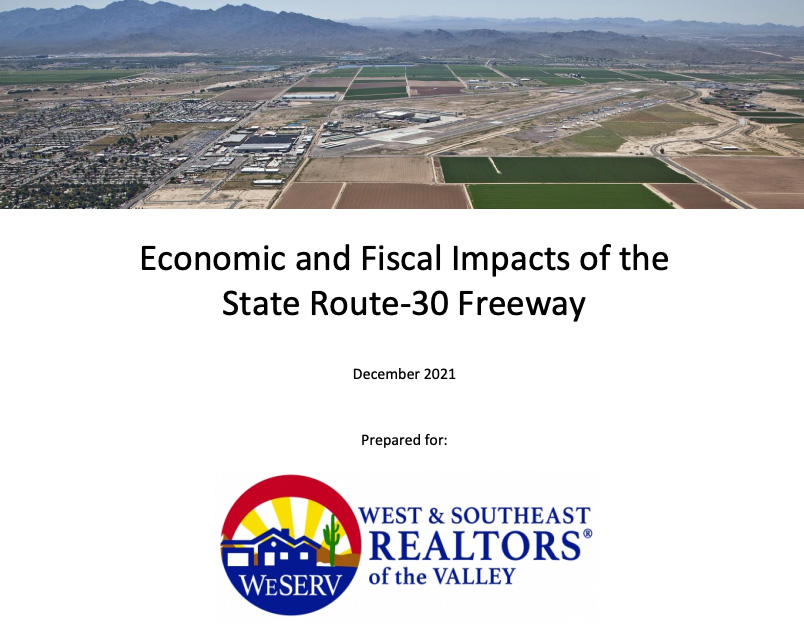Executive Summary
Investments that ensure adequate and quality infrastructure are among the most fundamental
components for facilitating economic growth and the development of a region. While infrastructure
investments can be costly, the benefits from efficiency gains in commercial transportation and the flow
of people throughout a region can outweigh the costs significantly.
These transportation enhancements lead to additional population growth and new job opportunities.
Increasing population and employment levels increase economic activity and the demand for real estate
development, which generates additional tax revenues for state and local governments.
The proposed SR-30 freeway represents such an investment. Located approximately 5 miles south of the
I-10, it will connect the South Mountain Freeway (L-202) with the Loop 303 Freeway (L-303). This report
highlights how the SR-30 can advance the population and employment growth, and real estate
development in the area surrounding the freeway.
To quantify how various levels of infrastructure investment in the SR-30 can affect the growth of the area,
an economic model was developed. The model estimates the economic and fiscal impacts resulting from
four different investment scenarios (i.e., baseline, moderate, aggressive, and constrained) over a 20-year
period.
The impacts are defined in terms of jobs, labor income (i.e., the total wages and benefits paid to
employees), economic output (i.e., the value of goods and services produced) and tax revenues (i.e., the
sum of state and local revenues). The impacts are categorized as either construction impacts (i.e., the
impacts occurring during the construction of the projected new homes and commercial buildings) over a
20-year period or on an annual basis after year 20 once the projected population and employment levels
are realized.
The study area and impacts of the four scenarios are summarized below, followed by an analysis
comparing the outcomes.




